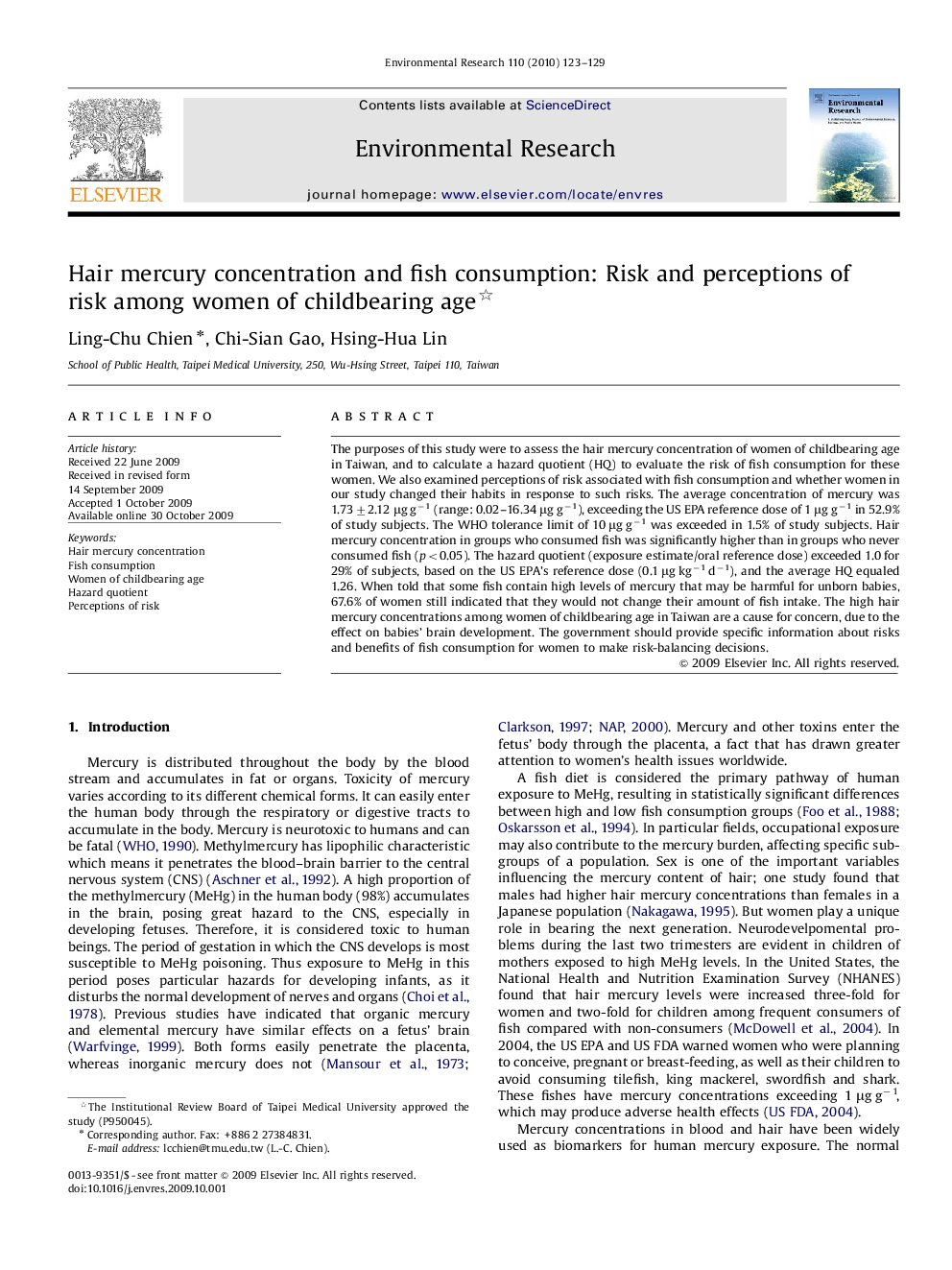| Article ID | Journal | Published Year | Pages | File Type |
|---|---|---|---|---|
| 6353427 | Environmental Research | 2010 | 7 Pages |
Abstract
The purposes of this study were to assess the hair mercury concentration of women of childbearing age in Taiwan, and to calculate a hazard quotient (HQ) to evaluate the risk of fish consumption for these women. We also examined perceptions of risk associated with fish consumption and whether women in our study changed their habits in response to such risks. The average concentration of mercury was 1.73±2.12 μg gâ1 (range: 0.02-16.34 μg gâ1), exceeding the US EPA reference dose of 1 μg gâ1 in 52.9% of study subjects. The WHO tolerance limit of 10 μg gâ1 was exceeded in 1.5% of study subjects. Hair mercury concentration in groups who consumed fish was significantly higher than in groups who never consumed fish (p<0.05). The hazard quotient (exposure estimate/oral reference dose) exceeded 1.0 for 29% of subjects, based on the US EPA's reference dose (0.1 μg kgâ1 dâ1), and the average HQ equaled 1.26. When told that some fish contain high levels of mercury that may be harmful for unborn babies, 67.6% of women still indicated that they would not change their amount of fish intake. The high hair mercury concentrations among women of childbearing age in Taiwan are a cause for concern, due to the effect on babies' brain development. The government should provide specific information about risks and benefits of fish consumption for women to make risk-balancing decisions.
Related Topics
Life Sciences
Environmental Science
Health, Toxicology and Mutagenesis
Authors
Ling-Chu Chien, Chi-Sian Gao, Hsing-Hua Lin,
